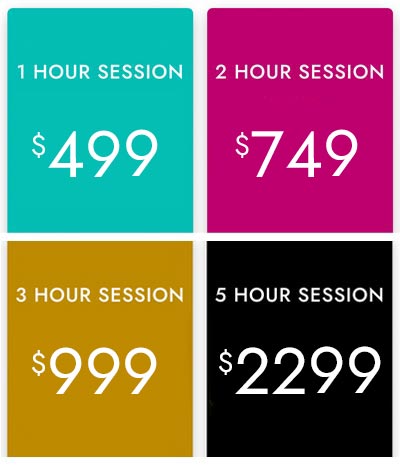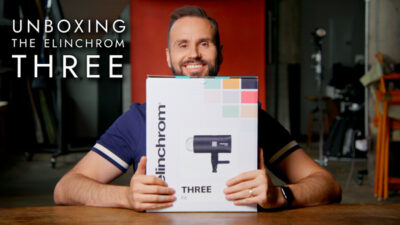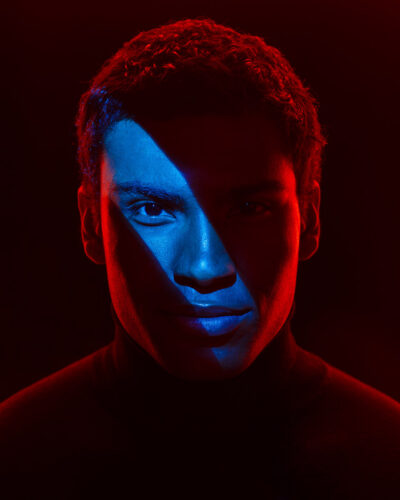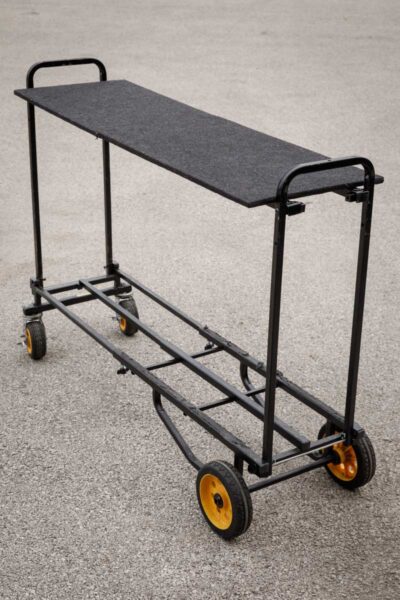In this video I’m going to review the new Elinchrom THREE, a 261 watt-second compact battery powered flash unit!
Elinchrom vs. Profoto
Elinchrom THREE One Light Kit
Adorama https://howl.me/ckOHJkaLdm0
Amazon
B&H https://bhpho.to/46Sg90q
Elinchrom THREE Two Light Kit
Adorama https://howl.me/ckOHKuk7x2V
Amazon
B&H https://bhpho.to/46BxRW2
Profoto B10X
Amazon https://howl.me/ckMGN2YTtfB
Amazon https://amzn.to/45tFRHl
B&H https://bhpho.to/3PWUa1d
The Elinchrom THREE is a new portable off-camera flash unit that is around the size of a 70 to 200mm lens. It will produce 525 full power 261 watt second flashes on a single charge of the integrated lithium ion battery. It featured TTL and HSS as well.
And if you’re running low on power during a shoot, you can charge the light with any USB-C power source while you’re shooting. You don’t have to turn it off to charge it.
Will get into all the specs, including the 1.2 second recycle time as I compare the light to its closest competitor the Profoto B10X and I will share with you the results of several tests I conducted over the past few weeks with the THREE and a Profoto B10. These tests were the most extensive tests I have ever conducted on any lights over the course of my career. Plus I’ll also show you the results I got from two photo shoots. And if you stick around til the end, I’ll share with you what I learned while making this video and how I am going to change the way I shoot going forward. This will be great information for everyone, regardless of wether or not you’re planning on purchasing a new light.
To give you a little bit of background. I switched over from Profoto to Elinchrom in 2019 mostly because I loved their modifiers and over the past few years Elinchrom has hired me on occasion to speak in a trade show booths and make content for their YouTube channel. They also gave me the Elinchrom THREE, but they did not pay me to make this video and in fact, they gave me the light without me promising to make any content whatsoever. They also did not have any editorial control over this video.
So as always, I am here to share with you what I have learned and if you’d like to help support me to make more videos like this, please click on the links above.
Specifications
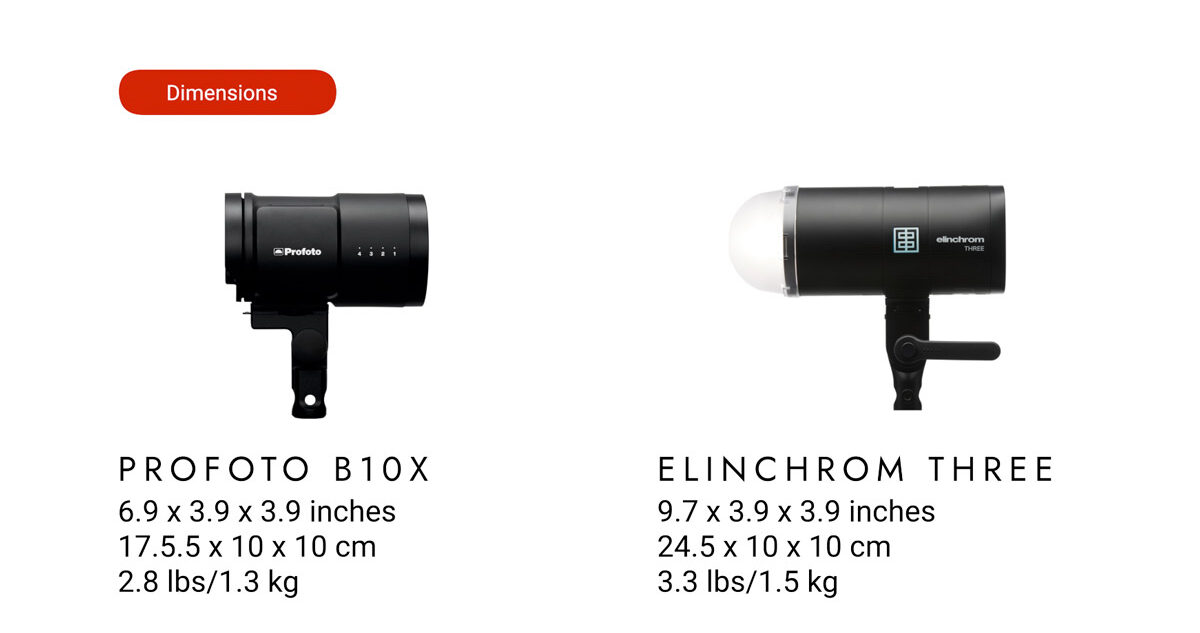
The compact Elinchom THREE will fit in any modifier made for the Profoto system and it comes with a nice adapter that will allow you to use it with any of the standard Elinchrom modifiers. It uses the Elinchrom radio system, however you could trigger it with Profoto lights by turning on the photocell.
The Elinchom THREE also comes with a knob AND a lever to secure the tilt mechanism.
It’s predecessor the Elinchom ONE came with a rubber adapter and only had a knob on the tilt mechanism. Unfortunately, I had difficulty keeping large modifiers in place with that light.
Lineup

The Elinchrom THREE is exactly half the power of the Elinchrom FIVE and twice the power of the Elinchrom ONE. The ONE was just strong enough to shoot outdoors with high speed sync in small modifiers, so having one more stop of power will make this light more attractive for many users. If you plan on using a large softbox outdoors, or a beauty dish, the Elinchrom FIVE would be a better choice given the fact that it has twice the power and an umbrella hole inside of the octa ring to accommodate the deflector discs for Elinchrom Beauty Dishes.
Recycle time
The Elinchrom THREE can recycle in 1.2 seconds at full power, which is slightly faster than a Profoto B10X which recycles in 1.3 seconds. I conducted a test with the Elinchrom THREE at full power, and confirmed that the recycle time is exactly 1.2 seconds.
Batteries

As I mentioned earlier the Elinchrom THREE internal battery is capable of 525 full power flashes and you can charge it with the Included charger in only one hour and 40 minutes. Plus, you can charge it in general with any USB-C power source and that includes your ability to do so while you’re shooting. The come in really helpful as Ive used power banks and my MacBook charger to keep Elinchrom lights charged up on set.
On the other hand, the Profoto B10x battery is capable of 400 flashes and you have to use the proprietary charger.
Modeling lamp
The Elinchrom THREE appears to share the same 20-watt bi-color modeling lamp as the Elinchrom one which produces 3000 lumens of light which is quite comparable to the 24 watt 3200 lumen modeling lamp in the B10 X
The Twilight Zone
The Elinchrom three can be powered down 5.2 stops where as the Profoto B10X can be powered down 10 stops. However the only time I have wished I could go lower with Elinchom lights was when I was shooting during twilight and during those instances I have just used the modeling lamps.
Flash duration
Alright, let’s get to the more important nerdy stuff. Flash duration is one of the most underrated, important statistics that you can look at when selecting a new light. The flash duration tells you how you can freeze movement in your shot whether that’s an athlete, water droplets, or just a model posing.
Most of the time when you are using flash indoors, the only light contributing to your shots is the light from your strobes. This is because that light is typically a lot brighter than the ambient light. When that happens, your shutter speed isn’t what freezes movement, its the brief burst of light from your flashes. The time it takes to discharge that light is known as the flash duration, which is expressed as a fraction of a second. The flash duration speeds are basically going to freeze movement just like a shutter speed would.
If you’ve ever shot a series of images and found that you had a lot of ghosting going on, it was likely because you were using flash too close to the ambient light level and or or your flash had a very long flash duration.
In previous test, which I will link to, I found that if you want to stop the movement of a dancer flying through the air, then you need to overpower the light by three stops or more and you need a light with a flash duration of 1/3000 of a second or shorter.
Using High speed sync would is great when mixing flash and natural light, but using your camera’s standard sync speed indoors will allow you to power down your strobes, get more depth of field and shoot at lower ISOs,.
Many manufacturers including Elinchrom, but not Profoto, show the flash duration on the lights’ LCD. For Profoto and other manufacturers you will need to look up this information in your manual. In general the brighter the light is, the longer it’s going to take for the flash to discharge and some lights discharge faster than others. So if your image is blurry, turn down the flash power and see if that makes a difference.
My Sekonic L858 light meter can measure flash duration and so one of the tests I conducted was to check the flash duration for the Elinchrom THREE and my friends Profoto B10 at several different settings. Profoto states in their manuals that the flash duration for the 250 watt-second B10 and the B10X units are exactly the same. In addition, I didn’t see any claims that the B10x had different color output than the B10, but it is possible. We will be checking white balance in our next test. When Profoto released the B10 with the B10X they marketed it as having faster recycle time and a brighter modeling lamp.
Both manufactures have a mode were they prioritize speed over color accuracy. Profoto uses the terms Freeze and normal and Elinchrom uses the terms action and standard. Here is how they compare in each mode. As you can see, the flash duration, for the Profoto B10 is a little shorter in general at the same power settings. So when shooting dancers you’ll need to power down the THREE about 1/3 of a stop lower than the B10x to hit 1/3000 of a second.
Using action or freeze mode does come with consequences. Both manufacturers’ lights go from having very stable white balance in normal or standard modes to having a more variable white balance in Freeze and action modes. I conducted this test by placing a color checker in a cove I created with black foam boards to eliminate reflected light. I photographed the checker and set a white balance on the 18% gray square in capture one and then recorded the white balance numbers. This is not as sophisticated of a test as using a Sekonic color meter, however it did give me very consistent results.
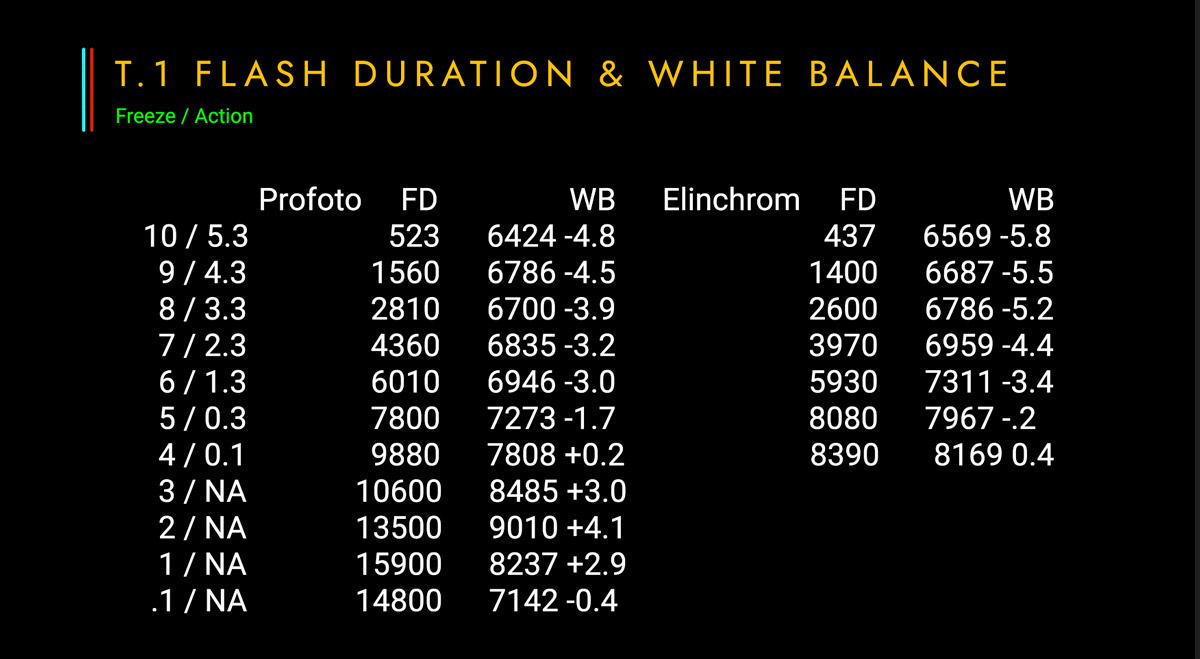

One caveat, .1 on the Elinchrom system is the lowest power setting and its actually equal to 4.8 on the Profoto scale.
You’ll notice that the Elinchrom and Profoto lights both have very similar results closer to full power, but when you go to lower power values on the lights, the light becomes very blue and shifts towards green. The Profoto light is technically more consistent again across the power range, however, I have found previously that when you are using multiple lights and modifiers, a 500 kelvin shift from light to light within a picture is not noticeable. I have used Elinchrom lights for the past FIVE years and I’ve only noticed a color shift in my images a few times and mostly that was when I was using a light at very low power while in action mode. In Fact, I would avoid going below power setting 0.9 while in action mode. The Profoto light also shifted considerably when I went from power setting 5 to 4 in Freeze mode.
For general studio photography you can use normal or standard mode. As you can see here on the chart, the white balance is extremely stable for both lights, but the Elinchrom flash duration numbers are lower. To make sure that these numbers weren’t too low, I conducted a test with my model friend Jason. I used the THREE at full power in Standard mode, which resulted in a flash duration of 1/489th of a second and I only had 7 blurry images, which is equal to 2%. So it’s not a big deal.
Brightness tests
You may have noticed that these two lights have a very different design. Current Profoto monolights have a flat front and the Elinchrom lights have a glass dome on the front and the flash tubes protrude slightly outsi de of the body. When I used Profoto lights, I tested their standard D1 head, a D1 with an accessory dome and an Acute head in a Profoto silver beauty dish. I found that the light from the flat faced model produced less contrast than the light from the Acute head, which has the flash tube sitting outside of the body. The D1 with the dome fell in the middle. I then conducted similar tests with other modifiers and concluded that you needed a light with the flash tube outside of the body to properly fill a beauty dish and large modifiers.
So when I started looking into Elinchrom, their exposed flash tube design made switching very attractive.
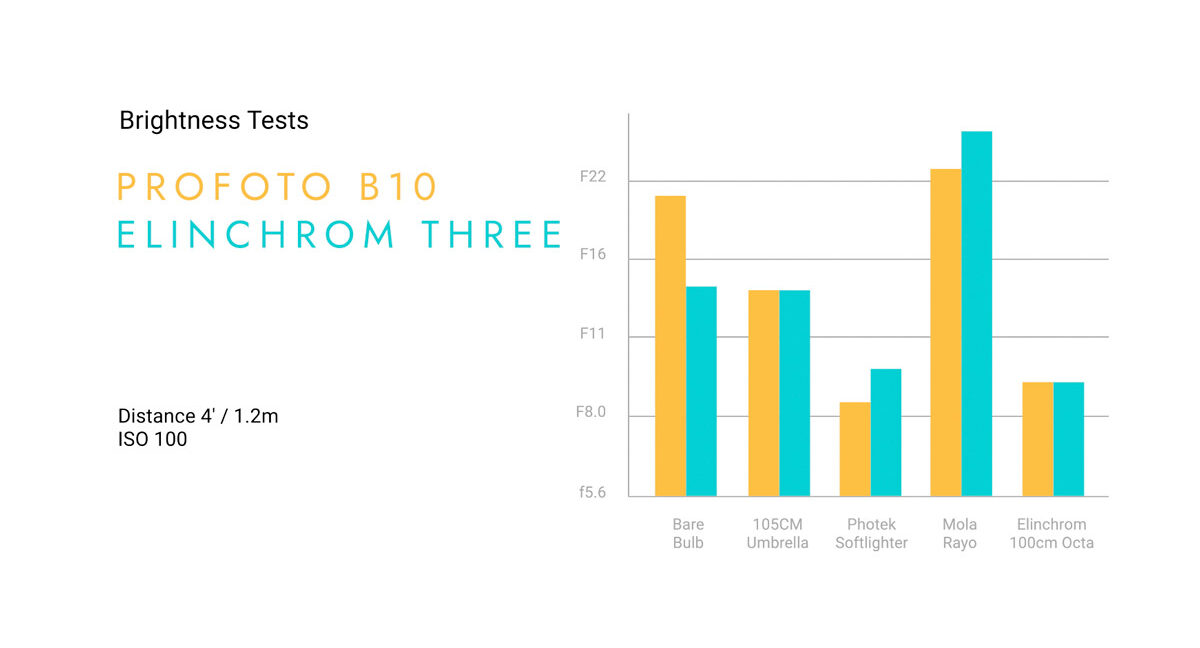
Light emanates from the heads differently based on the design. With the THREE, the light comes out in a beam angle of 160°, where as the Profoto B10X produces an approximately 70° beam. In order to test the brightness of these lights against each other I set up my light meter 4 feet or 1.2 m from the lights . I did not use the optional frosted dome on the THREE during these tests. When I tested them bare bulb the B10 was about 1.2 stops brighter. I would expect the Profoto light to be brighter because it’s volume of light is directed forward, whereas the Elinchrom light is directed in more of a hemisphere. Next I tested them in different modifiers that would capture the entire beam spread and push it forward, so first I tested them in an Elinchrom 105 cm umbrella and I placed the light in the umbrella so that the flash tube was even with the rim of the modifier. Both lights in this test meter that F 11 5/10.
Then I placed the lights in the totally agnostic Photek softlighter umbrella with a diffusion cover. The Elinchrom light metered at F8 5/10 and the Profoto light metered at F 8 1/10.
I also placed the lights in a Mola Rayo, a 15 inch hard reflector, and the THREE metered at f22 4/10 and the B10 metered at f22 1/10
Finally, I placed both lights in the Elinchrom 100 cm or 39 inch deep octa box and they both metered at F 8 3/10.
So I would say that these lights are pretty much the same when it comes to brightness.
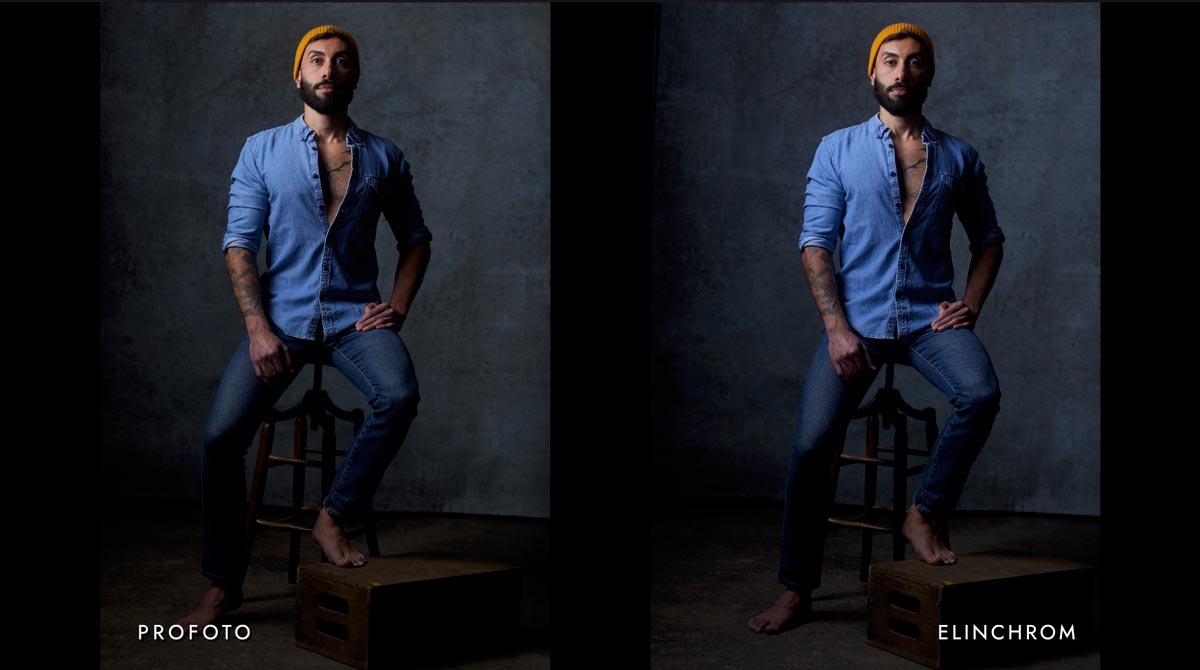
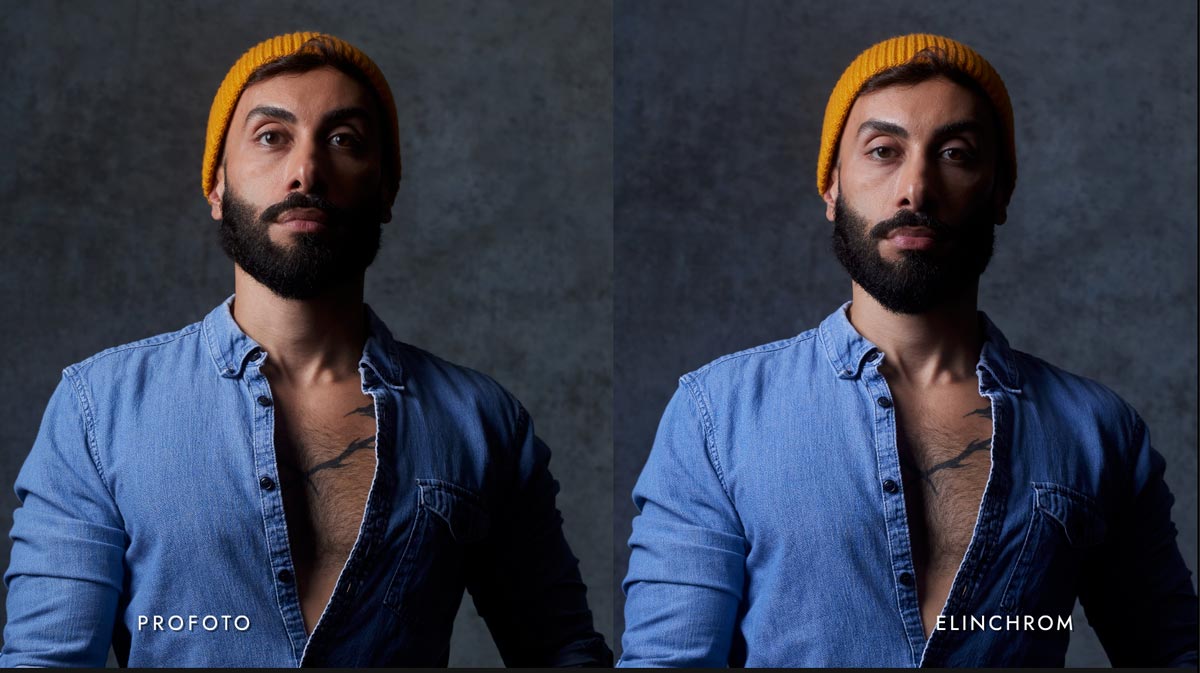
I also tested the lights during this shoot with DJ by placing them both in the Photek softlighter, and as you can see in the results, they are extremely similar and I don’t see any increased gradient from the top to the bottom in The Profoto image when compared to the Elinchrom image. So the head design difference may only be important in particular modifiers.
I would have tested them both in a beauty dish, but unfortunately, I no longer have one that I can use with both lights.
I also tested the lights by taking several photos at the same power settings and then analyzed those shots to see if there were any shifts in color or luminance from shot to shot, and I found that both lights were nearly perfect. Here is a sample of some of the test series I took with each light at the same power setting. As you can see, every frame is substantially identical.

Conclusions
Looking at everything that we’ve talked about today, you can see that sometimes Profoto is winning and sometimes the Elinchrom is winning. At the end of the day. The Elinchrom light is going to have a street price that is about 1/2 that of the Profoto light. So for many users, the choice between the two is going to be obvious. Please let us know which light you think won in the comments.

However, when you buy a light, you are buying into an eco system. The main reason why I switched over to Elinchrom, is because I loved their modifiers, including their Lightmotiv, indirect octabox.One of the other determining factors was the fact that the Sekonic L-478 and 858 light meters are able to communicate directly with the Elinchrom lights and can fire, measure and adjust them right from the light meter. Which makes life on set a lot easier.
The Elinchrom system also has great mobile and desktop app. Both of which are free. You are able to connect to as many as 20 different lights at a time and adjust most of the settings for those lights directly in the application, and then save a configuration file for that set up which you can then load later. So if you’re doing the same shots over and over again in your studio, you can set up scene files for each of your set ups to speed up your work flow. In a previous video, I used the mobile app in order to program seven different lighting set ups on the same set with multiple lights witch I executed in 10 minutes while photographing NFL players. You can check out that video up here as well.
My key takeaway from all of these tests, is that I will be using the standard mode from now on with all of my lights, unless I know there is movement in the shots that I need to freeze, like a model walking through a scene or an athlete flying through the frame. If action mode is warranted, then I will stay above Elinchrom power setting 1.0 when using multiple light sources and I will look out for color shifts as I shoot and adjust my power settings to get more homogeneous results. If you’re shooting with the Profoto B10, remember that big shift happens in freeze mode between power setting 4 and 5. Most brands have a color and flash duration mode, so you might be better off following the same strategy too.
If you would be interested in a video with White Balance and flash duration tests for all of my Elinchrom lights and modifiers, please let me know in the comments. With the help of some friends, I could extended that to Profoto as well.
The Elinchrom THREE will be a great choice for many photographers as 261 watt seconds is more than enough power for most applications.
Please let me know if you have any questions or comments below. If you could, please click on those links in the description, like and subscribe and sign up for the bell, that would be appreciated.Thanks again have a great day and I will talk to you soon.

